Linda Petzold
Training Stiff Neural Ordinary Differential Equations with Implicit Single-Step Methods
Oct 08, 2024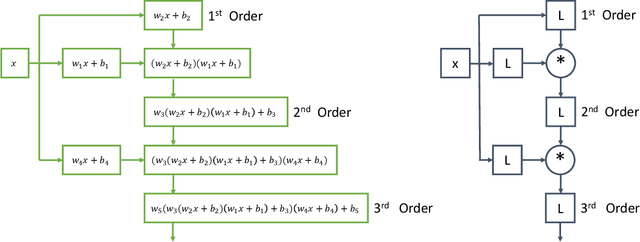
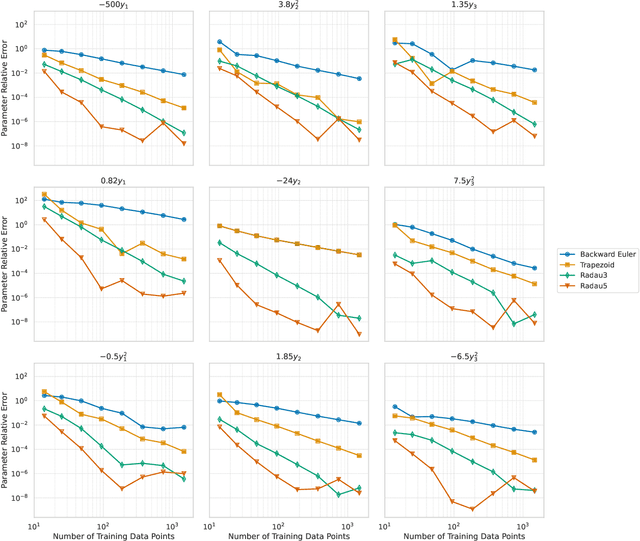

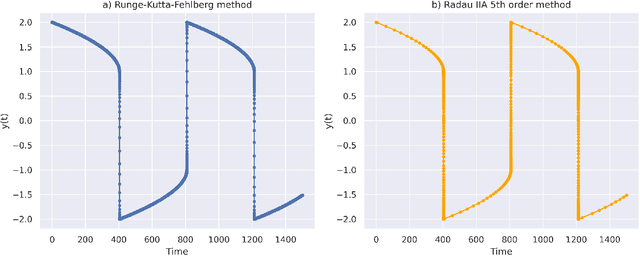
Abstract:Stiff systems of ordinary differential equations (ODEs) are pervasive in many science and engineering fields, yet standard neural ODE approaches struggle to learn them. This limitation is the main barrier to the widespread adoption of neural ODEs. In this paper, we propose an approach based on single-step implicit schemes to enable neural ODEs to handle stiffness and demonstrate that our implicit neural ODE method can learn stiff dynamics. This work addresses a key limitation in current neural ODE methods, paving the way for their use in a wider range of scientific problems.
Quokka: An Open-source Large Language Model ChatBot for Material Science
Jan 02, 2024Abstract:This paper presents the development of a specialized chatbot for materials science, leveraging the Llama-2 language model, and continuing pre-training on the expansive research articles in the materials science domain from the S2ORC dataset. The methodology involves an initial pretraining phase on over one million domain-specific papers, followed by an instruction-tuning process to refine the chatbot's capabilities. The chatbot is designed to assist researchers, educators, and students by providing instant, context-aware responses to queries in the field of materials science. We make the four trained checkpoints (7B, 13B, with or without chat ability) freely available to the research community at https://github.com/Xianjun-Yang/Quokka.
A Survey on Detection of LLMs-Generated Content
Oct 24, 2023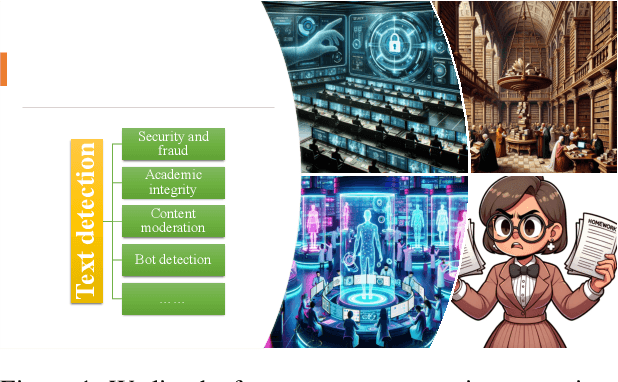
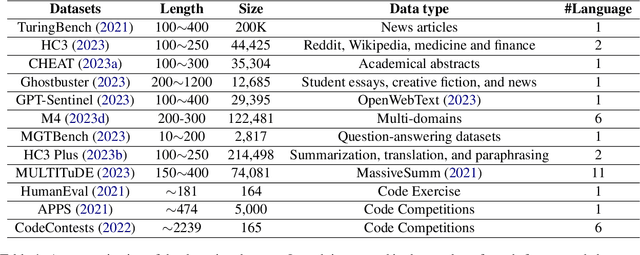
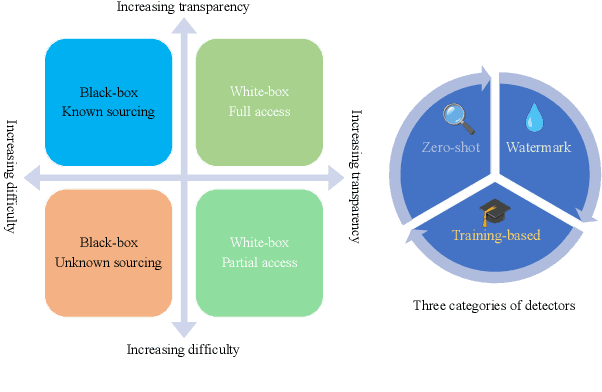

Abstract:The burgeoning capabilities of advanced large language models (LLMs) such as ChatGPT have led to an increase in synthetic content generation with implications across a variety of sectors, including media, cybersecurity, public discourse, and education. As such, the ability to detect LLMs-generated content has become of paramount importance. We aim to provide a detailed overview of existing detection strategies and benchmarks, scrutinizing their differences and identifying key challenges and prospects in the field, advocating for more adaptable and robust models to enhance detection accuracy. We also posit the necessity for a multi-faceted approach to defend against various attacks to counter the rapidly advancing capabilities of LLMs. To the best of our knowledge, this work is the first comprehensive survey on the detection in the era of LLMs. We hope it will provide a broad understanding of the current landscape of LLMs-generated content detection, offering a guiding reference for researchers and practitioners striving to uphold the integrity of digital information in an era increasingly dominated by synthetic content. The relevant papers are summarized and will be consistently updated at https://github.com/Xianjun-Yang/Awesome_papers_on_LLMs_detection.git.
Zero-Shot Detection of Machine-Generated Codes
Oct 08, 2023



Abstract:This work proposes a training-free approach for the detection of LLMs-generated codes, mitigating the risks associated with their indiscriminate usage. To the best of our knowledge, our research is the first to investigate zero-shot detection techniques applied to code generated by advanced black-box LLMs like ChatGPT. Firstly, we find that existing training-based or zero-shot text detectors are ineffective in detecting code, likely due to the unique statistical properties found in code structures. We then modify the previous zero-shot text detection method, DetectGPT (Mitchell et al., 2023) by utilizing a surrogate white-box model to estimate the probability of the rightmost tokens, allowing us to identify code snippets generated by language models. Through extensive experiments conducted on the python codes of the CodeContest and APPS dataset, our approach demonstrates its effectiveness by achieving state-of-the-art detection results on text-davinci-003, GPT-3.5, and GPT-4 models. Moreover, our method exhibits robustness against revision attacks and generalizes well to Java codes. We also find that the smaller code language model like PolyCoder-160M performs as a universal code detector, outperforming the billion-scale counterpart. The codes will be available at https://github.com/ Xianjun-Yang/Code_detection.git
Shadow Alignment: The Ease of Subverting Safely-Aligned Language Models
Oct 04, 2023



Abstract:Warning: This paper contains examples of harmful language, and reader discretion is recommended. The increasing open release of powerful large language models (LLMs) has facilitated the development of downstream applications by reducing the essential cost of data annotation and computation. To ensure AI safety, extensive safety-alignment measures have been conducted to armor these models against malicious use (primarily hard prompt attack). However, beneath the seemingly resilient facade of the armor, there might lurk a shadow. By simply tuning on 100 malicious examples with 1 GPU hour, these safely aligned LLMs can be easily subverted to generate harmful content. Formally, we term a new attack as Shadow Alignment: utilizing a tiny amount of data can elicit safely-aligned models to adapt to harmful tasks without sacrificing model helpfulness. Remarkably, the subverted models retain their capability to respond appropriately to regular inquiries. Experiments across 8 models released by 5 different organizations (LLaMa-2, Falcon, InternLM, BaiChuan2, Vicuna) demonstrate the effectiveness of shadow alignment attack. Besides, the single-turn English-only attack successfully transfers to multi-turn dialogue and other languages. This study serves as a clarion call for a collective effort to overhaul and fortify the safety of open-source LLMs against malicious attackers.
Bayesian polynomial neural networks and polynomial neural ordinary differential equations
Aug 25, 2023



Abstract:Symbolic regression with polynomial neural networks and polynomial neural ordinary differential equations (ODEs) are two recent and powerful approaches for equation recovery of many science and engineering problems. However, these methods provide point estimates for the model parameters and are currently unable to accommodate noisy data. We address this challenge by developing and validating the following Bayesian inference methods: the Laplace approximation, Markov Chain Monte Carlo (MCMC) sampling methods, and variational inference. We have found the Laplace approximation to be the best method for this class of problems. Our work can be easily extended to the broader class of symbolic neural networks to which the polynomial neural network belongs.
DNA-GPT: Divergent N-Gram Analysis for Training-Free Detection of GPT-Generated Text
May 27, 2023



Abstract:Large language models (LLMs) have notably enhanced the fluency and diversity of machine-generated text. However, this progress also presents a significant challenge in detecting the origin of a given text, and current research on detection methods lags behind the rapid evolution of LLMs. Conventional training-based methods have limitations in flexibility, particularly when adapting to new domains, and they often lack explanatory power. To address this gap, we propose a novel training-free detection strategy called Divergent N-Gram Analysis (DNA-GPT). Given a text, we first truncate it in the middle and then use only the preceding portion as input to the LLMs to regenerate the new remaining parts. By analyzing the differences between the original and new remaining parts through N-gram analysis in black-box or probability divergence in white-box, we can clearly illustrate significant discrepancies between machine-generated and human-written text. We conducted extensive experiments on the most advanced LLMs from OpenAI, including text-davinci-003, GPT-3.5-turbo, and GPT-4, as well as open-source models such as GPT-NeoX-20B and LLaMa-13B. Results show that our zero-shot approach exhibits state-of-the-art performance in distinguishing between human and GPT-generated text on four English and one German dataset, outperforming OpenAI's own classifier, which is trained on millions of text. Additionally, our methods provide reasonable explanations and evidence to support our claim, which is a unique feature of explainable detection. Our method is also robust under the revised text attack and can additionally solve model sourcing. Codes are available at https://github.com/Xianjun-Yang/DNA-GPT.
An Empirical Study on the Robustness of the Segment Anything Model
May 23, 2023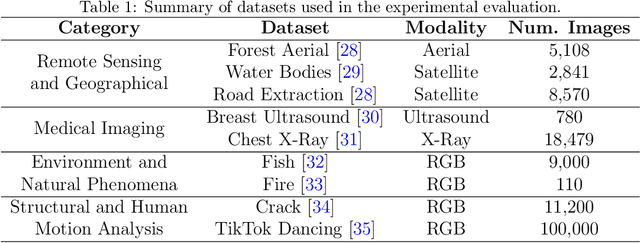
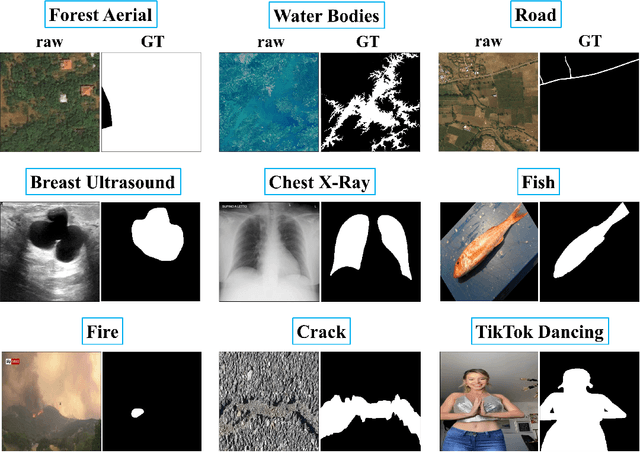
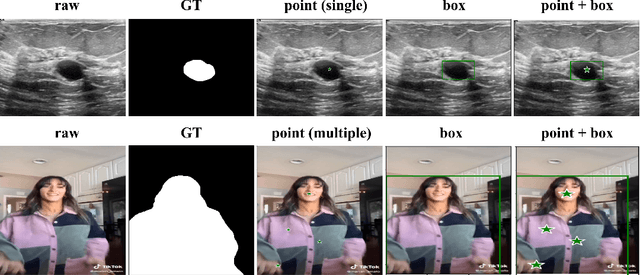
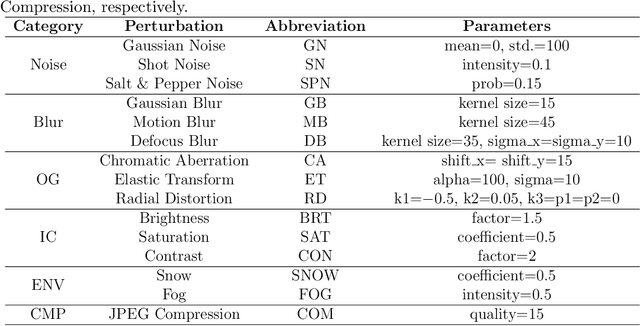
Abstract:The Segment Anything Model (SAM) is a foundation model for general image segmentation. Although it exhibits impressive performance predominantly on natural images, understanding its robustness against various image perturbations and domains is critical for real-world applications where such challenges frequently arise. In this study we conduct a comprehensive robustness investigation of SAM under diverse real-world conditions. Our experiments encompass a wide range of image perturbations. Our experimental results demonstrate that SAM's performance generally declines under perturbed images, with varying degrees of vulnerability across different perturbations. By customizing prompting techniques and leveraging domain knowledge based on the unique characteristics of each dataset, the model's resilience to these perturbations can be enhanced, addressing dataset-specific challenges. This work sheds light on the limitations and strengths of SAM in real-world applications, promoting the development of more robust and versatile image segmentation solutions.
Are Large Language Models Ready for Healthcare? A Comparative Study on Clinical Language Understanding
Apr 13, 2023



Abstract:Large language models (LLMs) have made significant progress in various domains, including healthcare. However, the specialized nature of clinical language understanding tasks presents unique challenges and limitations that warrant further investigation. In this study, we conduct a comprehensive evaluation of state-of-the-art LLMs, namely GPT-3.5, GPT-4, and Bard, within the realm of clinical language understanding tasks. These tasks span a diverse range, including named entity recognition, relation extraction, natural language inference, semantic textual similarity, document classification, and question-answering. We also introduce a novel prompting strategy, self-questioning prompting (SQP), tailored to enhance LLMs' performance by eliciting informative questions and answers pertinent to the clinical scenarios at hand. Our evaluation underscores the significance of task-specific learning strategies and prompting techniques for improving LLMs' effectiveness in healthcare-related tasks. Additionally, our in-depth error analysis on the challenging relation extraction task offers valuable insights into error distribution and potential avenues for improvement using SQP. Our study sheds light on the practical implications of employing LLMs in the specialized domain of healthcare, serving as a foundation for future research and the development of potential applications in healthcare settings.
Dynamic Prompting: A Unified Framework for Prompt Tuning
Mar 06, 2023



Abstract:It has been demonstrated that prompt tuning is highly effective in efficiently eliciting knowledge from language models (LMs). However, the prompt tuning still lags behind fine-tuning, especially when the LMs are small. P-tuning v2 (Liu et al., 2021b) makes it comparable with finetuning by adding continuous prompts for every layer of the pre-trained model. However, prepending fixed soft prompts for all instances, regardless of their discrepancy, is doubtful. In particular, the inserted prompt position, length, and the representations of prompts for diversified instances through different tasks could all affect the prompt tuning performance. To fill this gap, we propose dynamic prompting (DP): the position, length, and prompt representation can all be dynamically optimized with respect to different tasks and instances. We conduct comprehensive experiments on the SuperGlue benchmark to validate our hypothesis and demonstrate substantial improvements. We also derive a unified framework for supporting our dynamic prompting strategy. In particular, we use a simple learning network and Gumble- Softmax for learning instance-dependent guidance. Experimental results show that simple instance-level position-aware soft prompts can improve the classification accuracy of up to 6 points on average on five datasets, reducing its gap with fine-tuning. Besides, we also prove its universal usefulness under full-data, few-shot, and multitask regimes. Combining them together can even further unleash the power of DP, narrowing the distance between finetuning.
 Add to Chrome
Add to Chrome Add to Firefox
Add to Firefox Add to Edge
Add to Edge